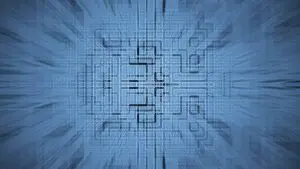As the power and power density of IC components continue to rise [1], the need to effectively dissipate the heat to ensure long-term reliability has increased [2]. The largest contributor to the total thermal resistance along the heat conduction path comes from the thermal interface material (TIM) used between the surfaces of the silicon die and the heat spreader or heat sink. … [Read more...]
Critical Cooling Issues in High Power Radio Frequency Transmitter Amplifiers
Introduction While emerging methodologies correctly insist that thermal engineers should be involved right from the early conceptual stages of electronics product design [1], many situations still require thermal analysis well after the introduction of the product to its intended application. Military transmitters installed in the 1980's and 1990's and still in operation today … [Read more...]
Thermal Interface Materials: A Brief Review of Design Characteristics and Materials
Introduction In the past few decades, as microprocessors have continued to evolve along Moore's law, providing increased functionality and performance, there has been an associated increase in cooling demand driven both by the increase in raw power and in local power densities on the die, commonly referred to as "hot spots"[1, 2]. Considerable attention has therefore been given … [Read more...]
Problems with Thermal Interface Material Measurements: Suggestions for Improvement
Preface Increasingly it is apparent that measuring the thermal properties of Thermal Interface Materials (TIMs) causes much irritation for vendors and users alike. This article focuses on various measurement and standardization aspects and offers a strategy to overcome the problems. It is essentially an abbreviated version of a paper presented at SEMITHERM '03 … [Read more...]
Thermal Interface Materials
It doesn't take long for an electronics assembler to realize that a thermal interface material (TIM) is essential when two or more solid surfaces are in the heat path. Standard machined surfaces are rough and wavy, leading to relatively few actual contact points between surfaces. The insulating air gaps created by multiple voids of "contacting" hard surfaces are simply too … [Read more...]










